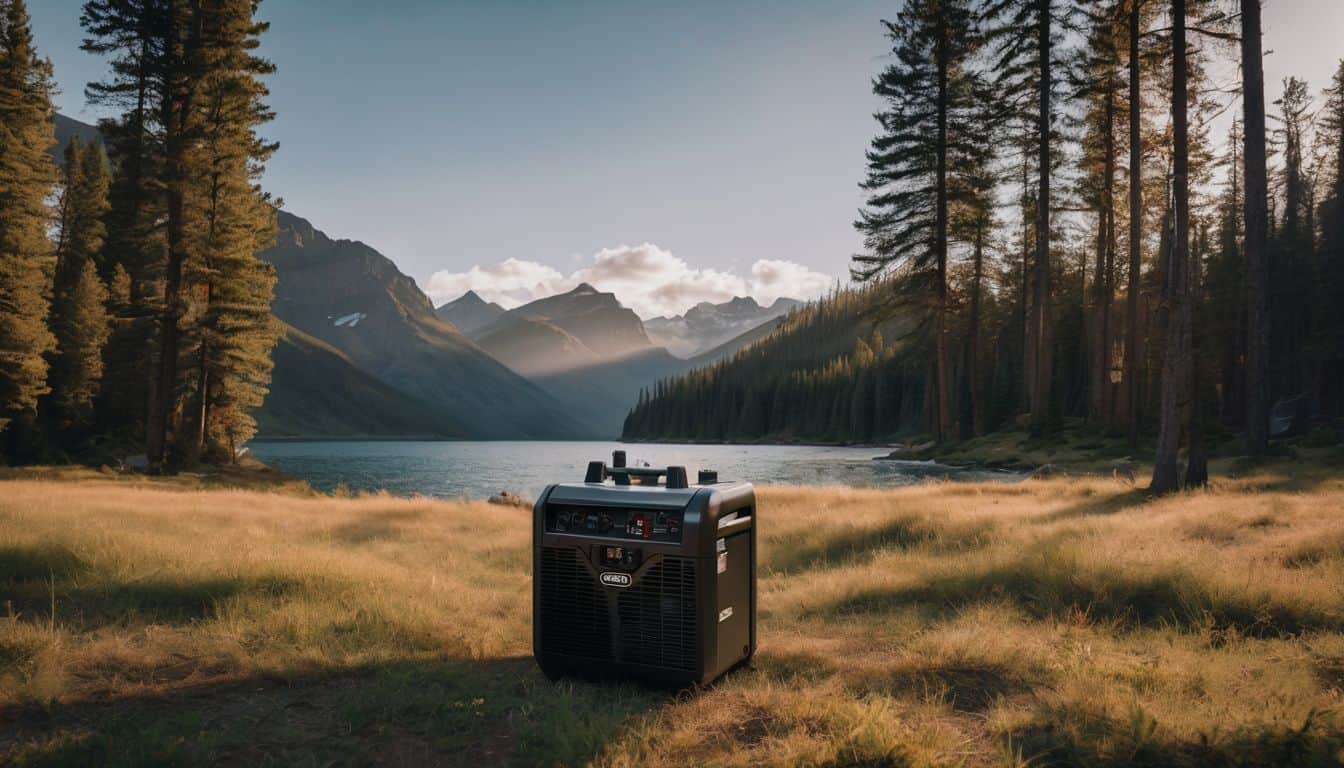Portable generators are invaluable for providing power in various situations, from construction sites to emergency backup during outages. However, their safe operation hinges on proper grounding techniques. This article will explore the essential grounding methods that ensure portable generators’ safe and efficient use.
Understanding Generator Neutral Configurations
Before diving into grounding techniques, it’s crucial to understand the two main types of generator neutral configurations: floating neutral and bonded neutral.
Floating Neutral
Generators with a floating neutral have their neutral conductor isolated from the frame. This configuration is common in older or smaller portable generators. The main advantage of a floating neutral is its versatility in different applications. However, careful consideration is required when connecting electrical systems to building buildings.
Bonded Neutral
In bonded neutral generators, the neutral conductor is connected to the generator’s frame. Due to its enhanced safety features, this configuration is becoming more common in modern portable generators. Bonded neutral generators are generally safer for standalone use but require additional considerations when connecting to building electrical systems.
Grounding Techniques for Portable Generators
Frame Grounding
Frame grounding involves connecting the generator’s frame to the earth. This is particularly important for floating neutral generators. The Occupational Safety and Health Administration (OSHA) provides specific guidelines for frame grounding:
- Use a copper grounding rod driven at least 8 feet into the ground.
- Connect the generator’s grounding terminal to the rod using a heavy gauge copper wire.
- Ensure the connection is secure and free from corrosion.
Neutral-to-Ground Bonding
Neutral-to-ground bonding is crucial for safety, especially in standalone applications. This bonding creates a path for fault currents to return to the source, triggering protective devices in case of a ground fault. This bonding should be done for generators with a floating neutral at the point of use, typically in the distribution panel or transfer switch.
Safety Considerations for Different Applications
Standalone Use
When using a generator directly to power equipment, the grounding requirements depend on the generator’s neutral configuration. Bonded neutral generators typically don’t require additional grounding for standalone use. However, floating neutral generators should be grounded to ensure safe operation.
Connection to Building Electrical Systems
Proper neutral switching is crucial when connecting a portable generator to a building’s electrical system. A transfer switch that switches both the hot and neutral conductors is necessary to prevent parallel paths for neutral current, which can create dangerous situations.
For more information on using portable generators in specific settings, such as construction sites, check out our article on using portable generators on construction sites.
Common Grounding Issues and Solutions
Ground Fault Circuit Interrupter (GFCI) Tripping
GFCI tripping is common with portable generators, often caused by neutral-ground bonding conflicts. To prevent this:
- Ensure proper neutral-to-ground bonding at only one point in the system.
- Use a transfer switch that switches both hot and neutral conductors.
- Consider using a generator with built-in GFCI protection.
Neutral-Ground Voltage
High neutral-ground voltage can indicate grounding issues. Regularly measure this voltage using a multimeter. If it exceeds a few volts, check your grounding connections and consult a professional if the issue persists.
Best Practices for Generator Grounding
- Regular Inspection and Maintenance: Check grounding connections regularly for corrosion or damage.
- Use Appropriate Grounding Equipment: Invest in high-quality grounding rods and heavy-gauge copper wire.
- Follow Manufacturer Guidelines: Always adhere to the manufacturer’s recommendations for grounding and operation.
Legal and Regulatory Compliance
Ensure your generator grounding practices comply with the National Electrical Code (NEC) and local building codes. These regulations are designed to ensure safe electrical practices and may vary by location.

Conclusion
Proper grounding is essential for the safe operation of portable generators. By understanding different neutral configurations, implementing appropriate grounding techniques, and following best practices, you can ensure that your portable generator operates safely and efficiently. When in doubt, always consult a qualified electrician or the generator manufacturer to ensure your setup meets all safety standards and regulations.
For those new to portable generators, our guide on the basics of portable generators explained provides a comprehensive introduction to these versatile power sources.
FAQS
What is grounding and why is it important for portable generators?
Grounding involves connecting the generator to the earth, usually with a copper wire and metal rod. This provides a safe path for electricity to dissipate into the ground, preventing dangerous shocks. Proper grounding is critical for the safe operation of portable generators.
When is grounding required for a portable generator?
Grounding is necessary when connecting a portable generator to a home or building’s electrical system via a transfer switch. The National Electrical Code requires grounding in these cases to prevent shock hazards. Generators powering tools or appliances directly may not always need grounding.
What materials are needed to ground a portable generator?
To properly ground a portable generator, you will need:
- Copper grounding wire
- Metal grounding rod at least 4 feet long
- Hammer to drive the rod into the earth
- Pliers, wrench, or clamps to secure wire connections
How deep should the grounding rod be driven into the soil?
The metal grounding rod should be hammered at least 8 feet deep into the ground. Driving it this far down ensures a good connection with moist soil, which is necessary for effective grounding and safety. Deeper is better if possible.
What should be done after connecting the grounding wire?
After attaching the copper grounding wire between the generator and metal rod, it’s important to double-check all connections. Make sure the wire is firmly clamped or bolted to the rod and generator. Loose connections can lead to shock risks or fire hazards.
Where can I find specific grounding instructions for my generator model?
Always refer to the owner’s manual that came with your specific generator for model-specific grounding procedures. If you’re unsure, consult a qualified electrician familiar with portable generator wiring and the National Electrical Code grounding requirements.
Is grounding a generator always required on construction sites?
Grounding is an essential safety practice when using portable generators on construction jobsites. Generators powering tools or equipment directly should be grounded as a precaution. Always follow the NEC code, OSHA regulations, and manufacturer instructions for jobsite grounding.

Leave a Reply